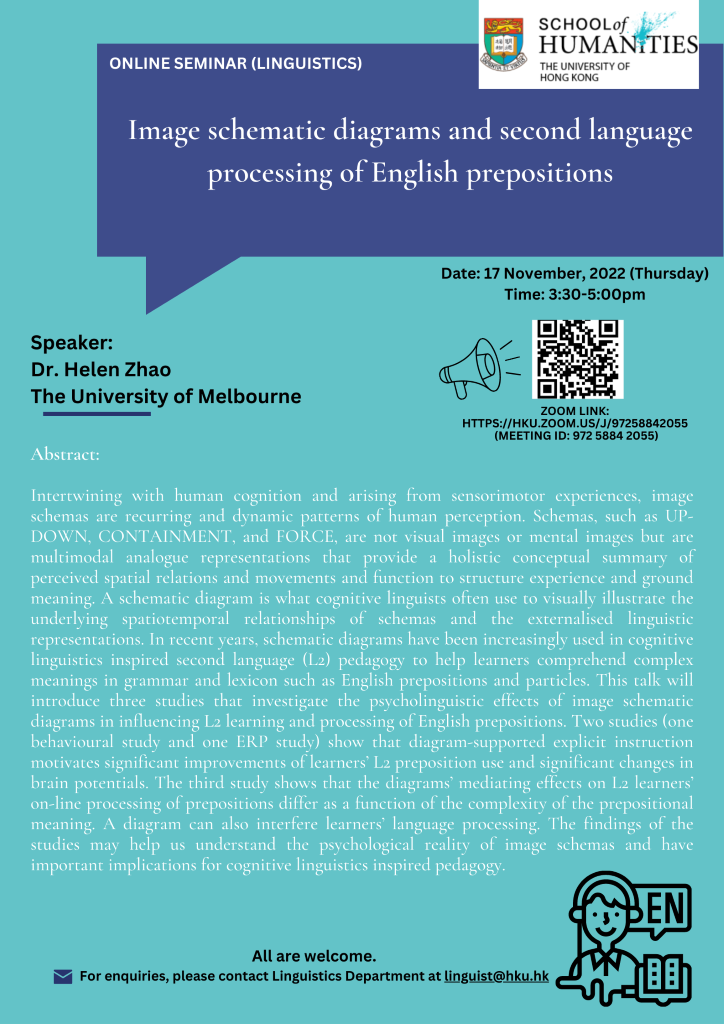

Image schematic diagrams and second language processing of English prepositions – Dr. Helen Zhao, The University of Melbourne
November 17, 2022 @ 3:30 pm - 5:00 pm
Intertwining with human cognition and arising from sensorimotor experiences, image schemas are recurring and dynamic patterns of human perception. Schemas, such as UP-DOWN, CONTAINMENT, and FORCE, are not visual images or mental images but are multimodal analogue representations that provide a holistic conceptual summary of perceived spatial relations and movements and function to structure experience and ground meaning. A schematic diagram is what cognitive linguists often use to visually illustrate the underlying spatiotemporal relationships of schemas and the externalised linguistic representations. In recent years, schematic diagrams have been increasingly used in cognitive linguistics inspired second language (L2) pedagogy to help learners comprehend complex meanings in grammar and lexicon such as English prepositions and particles. This talk will introduce three studies that investigate the psycholinguistic effects of image schematic diagrams in influencing L2 learning and processing of English prepositions. Two studies (one behavioural study and one ERP study) show that diagram-supported explicit instruction motivates significant improvements of learners’ L2 preposition use and significant changes in brain potentials. The third study shows that the diagrams’ mediating effects on L2 learners’ on-line processing of prepositions differ as a function of the complexity of the prepositional meaning. A diagram can also interfere learners’ language processing. The findings of the studies may help us understand the psychological reality of image schemas and have important implications for cognitive linguistics inspired pedagogy.
Date: Thursday, November 17, 2022
Time: 3:30-5:00 pm
Zoom: https://hku.zoom.us/j/97258842055
(Meeting ID: 972 5884 2055)
